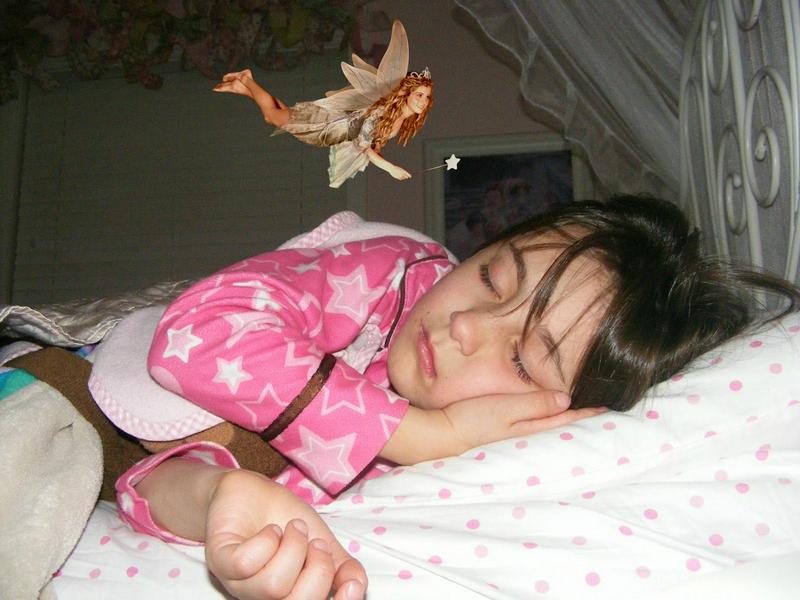Rise Of The Tooth Fairy
By | March 1, 2019
Tooth fairy and sleeping child. Source: (pinterest.com)
All across the country, children are losing their baby teeth and putting them under their pillows at night. This unsanitary practice is motivated by the belief that a fairy will come while they are asleep and leave them money in exchange for the tooth. But who is this fairy and what does she want with all those teeth?
While this mysterious tooth fairy is a relatively new invention, it most likely evolved from ancient practices for disposing of teeth. Proper disposal of teeth was important as many ancient European cultures believed witches could use discarded body parts such as hair, fingernails, and teeth to target their curses. As a result, they came up with ways of getting rid of the teeth by burning, burying, or even swallowing them. Some cultures would feed the teeth to an animal, often a mouse. Others would call upon a rodent or a crow to help the person grow a better tooth to replace the one that was lost.
Tooth fairy coin. Source: (coinsofamerica.com)
The monetary compensation which the tooth fairy allegedly leaves has several possible origins. One is an old British custom in which servant girls were given “fairy coins” during their sleep. However, this particular custom made no mention of teeth. Irish folklore, on the other hand, suggests that placing a tooth near a sleeping child could prevent the child from being replaced by a changeling. A Venetian version of Santa Claus would leave presents or money to children who had lost a tooth and a late 19th-century French tradition believed that the Virgin Mary would exchange coins or gifts for teeth left under a child’s pillow.
Fairy mouse. Source: (pinterest.com)
Many believe the modern tooth fairy is derived from an 18th-century fairy tale called La Bonne Petite Souris. In the story, a queen, imprisoned by an evil king, is rescued by a mouse who is actually a fairy. The fairy mouse knocks out the king’s teeth and hides them under his pillow. The story was released in English as an illustrated children’s book in the 1920s. A three-act play called The Tooth Fairy, written by Esther Watkins Arnold was published in 1927. However, the modern version of the tooth fairy did not become popular until after World War II. Lee Rogow wrote “The Tooth Fairy” as a children’s fantasy in 1949, causing the myth’s popularity to rise during the 1950s. The first reference book to mention it was World Book encyclopedia in 1979.
Tooth fairy muppet. Source: (muppet.wikia.com)
There were several factors doing the mid-20th century that led to the rise of the tooth fairy. One was an improvement in the nation’s economic status. For the first time in a long time, Americans could afford to indulge in silly traditions. This was also a very family-centric time period which led to a stronger emphasis on traditions. However, the most significant factor was the growth of the media. As the media’s influence spread throughout the country, so did the tales of the tooth fairy and other mythological figures.
Larry the Cable Guy in Tooth Fairy 2 (2012). Source: (screenrant.com)
These days, the tooth fairy has become something of a mascot for oral hygiene. She has also made several appearances in movies, though not always as a “she” and not always as a benevolent figure. Both Dwayne “The Rock” Johnson and Daniel Lawrence Whitney, better known as “Larry the Cable Guy,” have donned wings and a tutu to portray the tooth fairy. And the 2003 movie
Darkness Falls presents the tooth fairy as a vengeful spirit who kills anyone who sees her.






